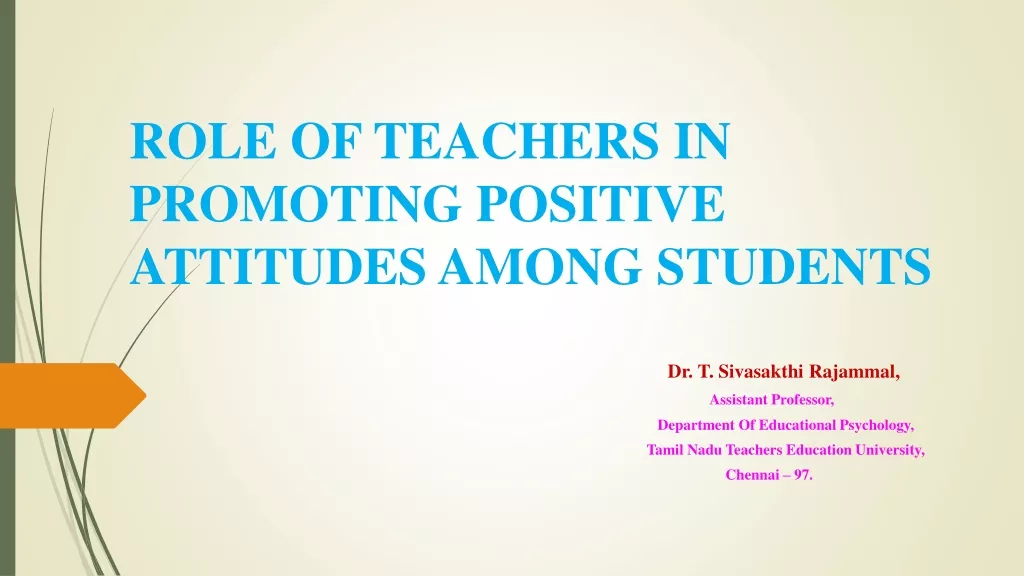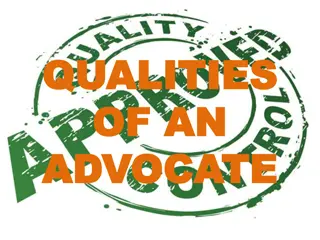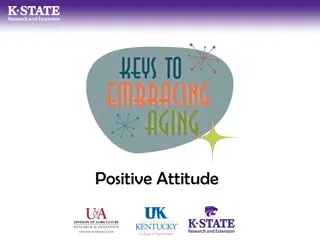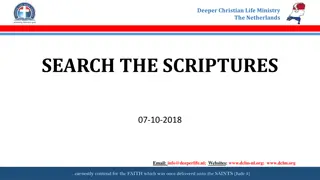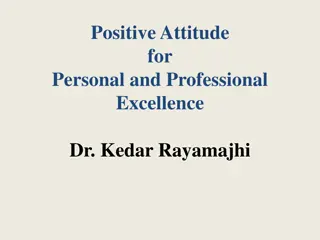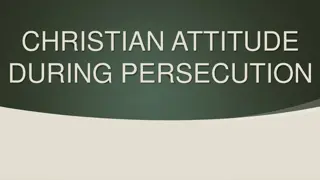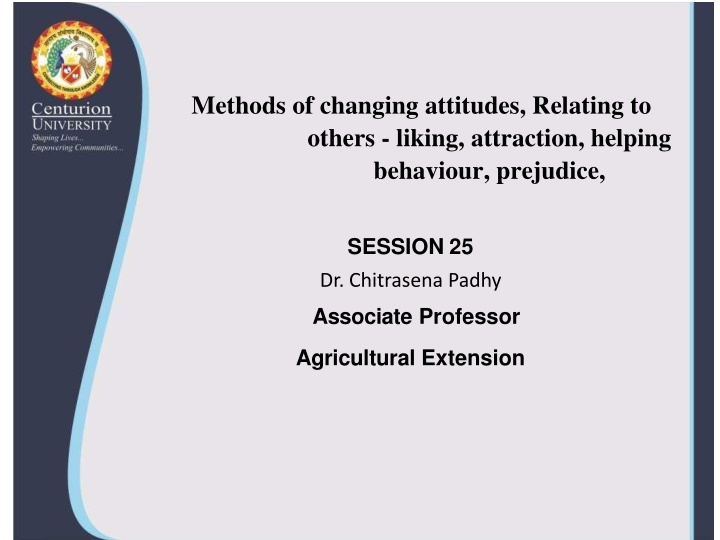
Effective Persuasion Techniques for Changing Attitudes
Explore methods for changing attitudes including persuasion, impact of good communicators, and factors influencing attitude change. Learn how advertising, charitable actions, and charismatic speakers can shape attitudes and behaviors.
Uploaded on | 0 Views
Download Presentation

Please find below an Image/Link to download the presentation.
The content on the website is provided AS IS for your information and personal use only. It may not be sold, licensed, or shared on other websites without obtaining consent from the author. If you encounter any issues during the download, it is possible that the publisher has removed the file from their server.
You are allowed to download the files provided on this website for personal or commercial use, subject to the condition that they are used lawfully. All files are the property of their respective owners.
The content on the website is provided AS IS for your information and personal use only. It may not be sold, licensed, or shared on other websites without obtaining consent from the author.
E N D
Presentation Transcript
Methods of changing attitudes, Relating to others - liking, attraction, helping behaviour, prejudice, SESSION 25 Dr. Chitrasena Padhy Associate Professor Agricultural Extension
Attitudes are feelings, often influenced by our beliefs, that predispose us to respond in a particular way to objects, people, and events. For example, we may feel dislike for a person because we believe he or she is mean, and, as a result, act unfriendly toward that person. Attitudes often predict our behavior. Changing Attitudes through Persuasion Numerous studies have shown that exposure to advertising may alter one's perspective. It was in the 1970s that the Reynolds Organization began running television commercials using Joe Camel, a mascot for its Camel line of cigarettes
The brand quickly became the market leader in the oneth market. Positive results through influence are possible, nevertheless. For example, study literature shows that pro initiatives in the mainstream press generally lead to decreased teen and older smoke rates. Contributions to charity, donating blood, and other pro-social actions, may all be prompted with a little bit of persuasive prodding.
Factors of Changing Attitudes through Persuasion Effect of Good Communicators To be persuasive, we need to attract the attention of our target audience, convey our particular message, and guarantee that our audience interprets it in the manner we want. To achieve these ends, persuasive communicators must be aware of their approaches' cerebral, emotional, and behavioral dimensions. In designing to convince someone, one needs to know what drives them, what they want, and what they hope to achieve. whenever they play to identity
Studies have shown that an identical message presented by a more charismatic speaker has a greater impact. Generally speaking, broadcasters are more successful when they make their audiences feel better about themselves and whenever they play to identity. For example, beautiful presenters are often more persuasive than their less appealing counterparts. The message of a handsome communication is more likely to be accepted because we have a more favorable impression of the promoted product and are in a better frame of mind to receive it
We are more inclined to react to communication that provides us with anything personally useful, as many participants add free presents, such as mailing stamps or little toys, into their pleas for charity contributions. Effective Methods of Communication Next, we will decide what kind of communication to have our newly selected communicators give. Either behavioral theories or marketers are so naive as to believe that a positive message alone will be enough.
To be successful, a word has to be heard, processed, accepted, and integrated into the recipient's sense of identity. For this reason, we work hard to hire responsibilities to deliver our commercials, but also why we shape our messages to influence audiences in the ways we desire. Methods of Transmitting Texts We often digest information on the fly because we are constantly inundated with persuasive messages and lack the time, skills, or desire to give each message the attention it deserves.
The likeability or beauty of the communicators or the music in the commercial's background is two insignificant advertising features that may sway us in these situations. If the messenger is endearing, the advertiser's music lifts our spirits, or it seems well-liked by many around each other, we may take their word for it without giving it much thought. In these situations, we participate in "sudden message analysis," wherein we embrace an effort at persuasion because we pay considerable attention to the evident or pleasurable aspects of the message.
Chain of Command of Message The purpose of every advertisement is to influence the recipient to form favorable opinions and perceptions about just the attitude being promoted. One of the goals of this communication is to highlight the good aspects of the item while minimizing the unfavorable ones.

